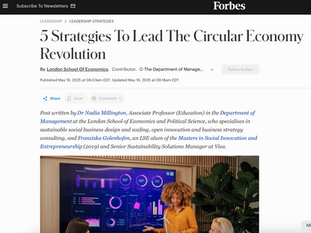top of page
Note: Besides this article, we interviewed our partner, MWT Recycling’s CEO Elisabeth Bröring, who described their process to recycle raw materials to the finest and most eco-friendly grain possible. In the following article, there will be some references to this interview. If you haven’t read it, you can find it here.
Raw Materials: The Building Blocks of Our Everyday Products

In everyday life, raw materials are used everywhere: to craft our phones or washing machines, to build our cars, and to create roads to drive on. This is because they are the basic components in creating objects. In other words, raw materials such as crude oil, cotton, iron ore, and copper are unprocessed or minimally processed materials (1).
In Europe, raw materials regulations focus on resource optimization, which means finding solutions to create our everyday objects with fewer materials but also reuse those that have already been processed. The main goal of the European Commission’s Raw Materials Initiative is to reduce dependency on imports (100% of heavy rare earth elements come from China) and secure supplies while also reducing environmental impacts. In addition, the Draghi report highlights that "The EU could potentially meet more than half to three-quarters of its metal requirements for clean technologies in 2050 through local recycling" (2).

As well as being the biggest supplier of materials, China has also been the biggest buyer of scraps for years. However, since the Chinese Green Fence Policy was established between 2013 and 2020, the entire global recycling process was disrupted. They are now accepting far less scrap and are intending to ban non-sorted plastic scrap that can contain other raw materials. As a result, low-quality scrap remains in Europe, and it has been noticed that some of it has been illegally transported and dumped in Turkey (3).
Let’s zoom out. What are the different life cycles of a material? We can import or buy recycled resources. How does that work exactly? Why is it important to highlight and develop recycling within Europe? Does it already impact some raw material's life cycle?
Copper’s Lifecycle: Why It Matters to Your Production?
We can take copper as an example. It is one of the industry's most-used raw materials due to its high conductivity. A computer contains around 1.5 kg of copper, a typical home about 100 kg, and a wind turbine around 5 tons (4). Copper is a key component in renewable energy and the electric vehicles (EV) industry. Not only is it important in green technologies, but it is also widely used in technology in general, including smart objects and the latest advancements.
Germany is a significant stakeholder in the copper industry due to its world-renowned car industry, which heavily relies on the material. However, Germany ranks third in global copper consumption, using only 3% of the global supply, far behind China’s 58% (5). To complicate matters, copper prices have skyrocketed since 2020, making products like cars significantly more expensive. Between May 2020 and May 2021, copper prices increased by 111% (6). While prices are expected to stabilize around $9,500 per ton, some studies predict they could surpass $10,000 per ton by 2025 as China’s demand continues to grow (5).

Three Paths for Copper: Landfill, Recycling, or Infinite Use?
During its life cycle, copper can follow different paths. We identified three of them:
Copper is imported, used, and exported to be destroyed or buried in landfills.
Copper is imported, used, and then recycled.
Recycled copper is used and then recycled again and reused.
From being imported to dumped in landfills
Copper mostly comes from Chile, Peru, and China and is used everywhere: electrical wiring, construction, and electronics. After use, it can end up in landfills, representing a waste of valuable material. Furthermore, unsorted products are a major source of pollution to the air, earth, and water. According to the International Copper Alliance, in 2018, 125,000 tons of copper from WEEE (Waste Electrical and Electronic Equipment) were lost in Europe. To give perspective, that year, 350,000 tons of copper were placed on the market. So, around 35% of copper landed in landfills, which represents €1.2 billion of raw materials that were completely lost (4)(7).

From being imported to getting recycled
There are ways to stop Europe from wasting large amounts of copper, as well as other valuable materials like gold, silver, and plastic. Those solutions are: organize, sort, recycle.
As Elisabeth Bröring highlighted in our discussion, most raw materials can be recycled many times. Copper content in WEEE varies from 2% to 5% of the whole supply of materials (4). If sorted properly and extracted from electronics we use every day, it can go back into the market.
From local recycling factories: keeping copper in a closed circle
This leads us to our third path for copper: the virtuous circle of recycling raw materials repeatedly. Buying recycled and smelted copper within Europe not only significantly reduces transportation costs but also lowers environmental impact. The International Copper Study Group (ICSP) estimates that about 50% of the copper used in Europe comes from recycled scrap. Recycling infrastructures in countries like Germany can further reduce Europe’s dependency on imported copper, making these facilities increasingly critical as demand grows. For instance, a 2022 SAP survey showed that 44% of U.S. companies cited raw material shortages as a key cause of supply chain disruptions. As a result, final consumers faced shortages of basic products such as aluminum windows or computers, with prices spiking as demand outpaced supply.

What’s Next for Raw Materials in Europe?
Copper plays a crucial role in green technologies, especially renewable energy and electric vehicles. Though its industrial life begins after extraction, it is not the only way to get copper. Multiple life cycles are possible, including recycling and reuse from WEEE. Recycling copper reduces reliance on new mining, ensuring a more sustainable and circular economy (5). As demand for copper grows, recycling and sustainable practices will be essential for a secure supply of this vital resource.
However, it is important to note, as Elisabeth Bröring said, that recycling will never replace mining and is more a complementary solution to preserve resources. Together, these approaches are vital to build a strong and resilient Circular Economy.
Sources
Wikipedia - Raw Materials Definition
Mario Draghi, "The Future of European Competitiveness," 2024
International Copper Alliance - Copper Data
Fastmarket
Tradingeconomics - Copper Price Data
Waste Electrical and Electronic Equipment (WEEE), International Copper Alliance
International Copper Study Group (ICSP)
Author: Emma Dauphin Reviewed by: Irina Chèvre
Published: January 2025
Related Posts
bottom of page






